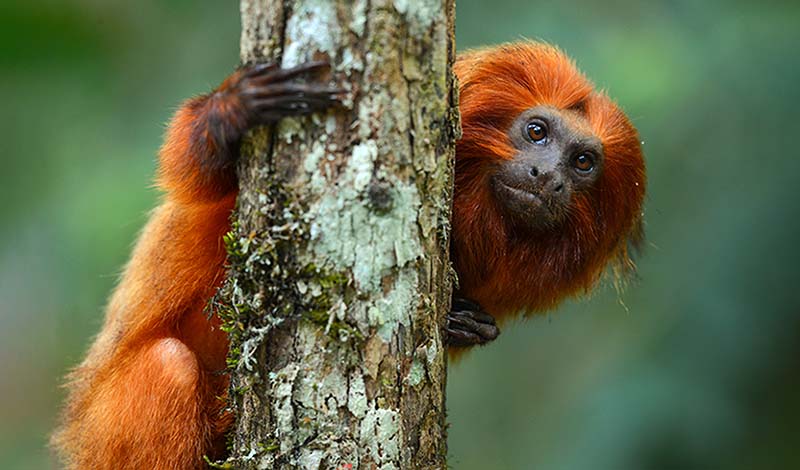2-minute read
Golden lion tamarins, wooly spider monkeys, maned three-toed sloths, red-tailed parrots. These are just a few of the thousands of species of amazing animals that occupy the Atlantic Forest in South America, the second most diverse ecosystem on the planet after the Amazon—and one of the most endangered.
From coastal lowlands to mist-covered mountain ranges, this vitally important biodiversity hotspot that extends from the southeastern coast of Brazil into Argentina and Paraguay once covered 370 million acres—about 3.5 times the land mass of California. Scientists now estimate that the Brazilian acreage of the Atlantic Forest has been reduced to remnants that are roughly only eight percent of its original size. Just eight percent.
Deforestation and fragmentation resulting from land use change, pollution, climate change and invasive species have accelerated the loss of habitat for the mammals, birds, reptiles, and amphibians that make this tropical forest their home, presenting new challenges to survival they may not have the capacity to overcome. Many of the Atlantic Forest’s endangered species, like the spectacular carroty-maned tamarin (pictured above), cannot be found anywhere else in the wild.
With one million species at risk of extinction globally, restoring degraded forest ecosystems that provide food and shelter for native wildlife is a top priority to safeguard biodiversity that supports all of life on Earth.
Through our partnership with Tree-Nation, we’re delighted to have connected with the Copaiba Environmentalist Association in Brazil to help plant native trees in the Atlantic Forest and guarantee a sustainable future for one of the last remaining places on Earth where the wild things are.
If you’re looking for an outstanding way to celebrate World Environment Day, you can learn more about the global movement to restore nature and check out active projects at Restor.eco and Rewild.org. Join us!
ICYMI Nature News
Skydiving Salamanders
When you make your home at the top of a 150-foot redwood tree, learning how to safely glide to the ground is an essential skill. Scientists have determined that the wandering salamander has perfected a life-saving parachuting technique to slow its descent when it falls. Who needs wings to fly when you have a twisty tail and torso? Dream big little amphibians, dream big.
The World’s Largest Plant
What’s 4,500 years old and three times the length of Manhattan? A stupendous seagrass located off the coast of Western Australia. Scientists believe the gargantuan marine plant grew from just one seed.
The World’s Oldest Tree
The granddaddy of all trees has been discovered in Chile’s Alerce Costero national park. The ancient Patagonian cypress is estimated to be 5,484 years old. It doesn’t look a day over 5,000 to us.
More and More Monarchs
The eastern monarch population wintering in Mexico’s forests has bounced back by 35%. Hooray for much-needed good nature news!
This Art is for the Birds
Audubon has launched the Birdsong Project, an unprecedented collaboration of more than 220 music and visual artists, actors, and literary figures contributing their creativity to celebrate the joy birds bring to the world. So beautiful. Check it out!
And it’s Moorhen for the Win
In semi-nature-related news, hearty congratulations to E. W. Scripps National Spelling Bee champion Harini Logan whose final correct spelling was a bird word—moorhen for the win. Speed-speller Harini is supercalifragilisticexpialidocious—and yes, we spell-checked.
FWP Monthly Carbon Capture Report
The trees that we planted through Tree-Nation in May will capture and store 555.6 tons of C02. That’s equivalent to 614,721 pounds of coal burned or 1,379,113 miles driven by an average gasoline-powered vehicle. Our suck-it-up stats total to date through the TN platform: 661.2 tons of CO2 stored.




















































